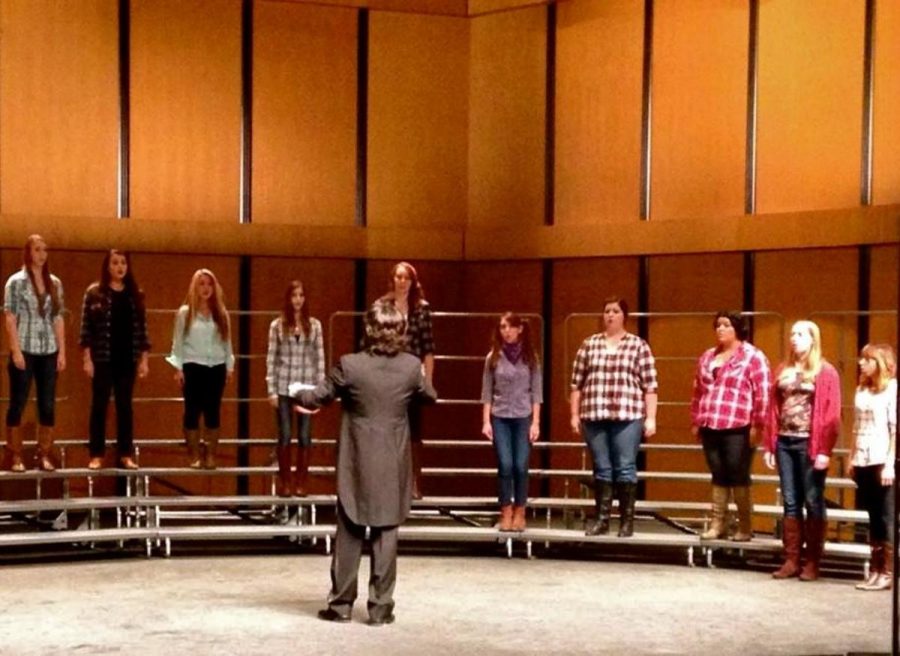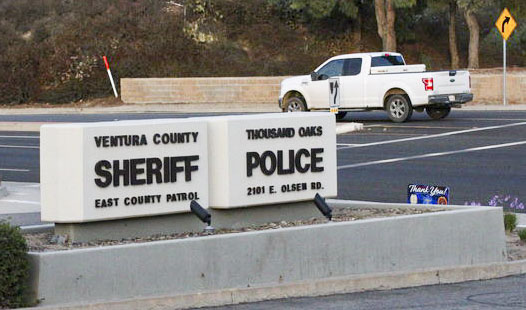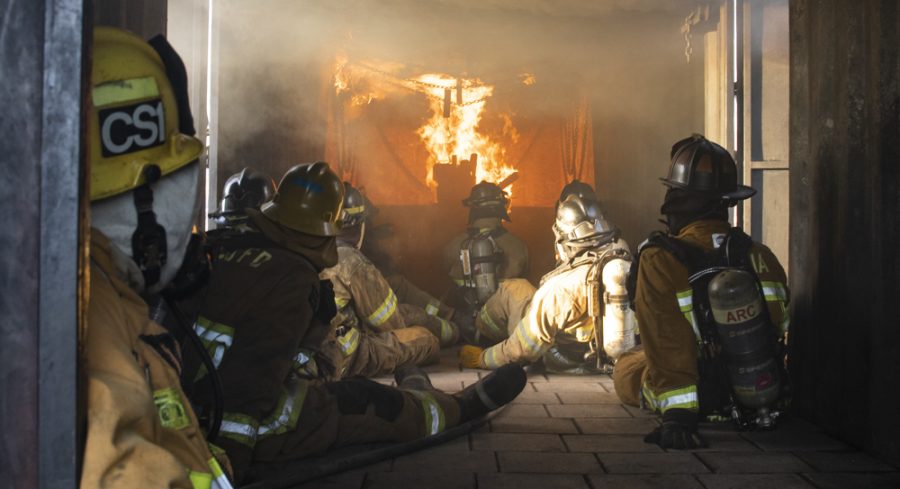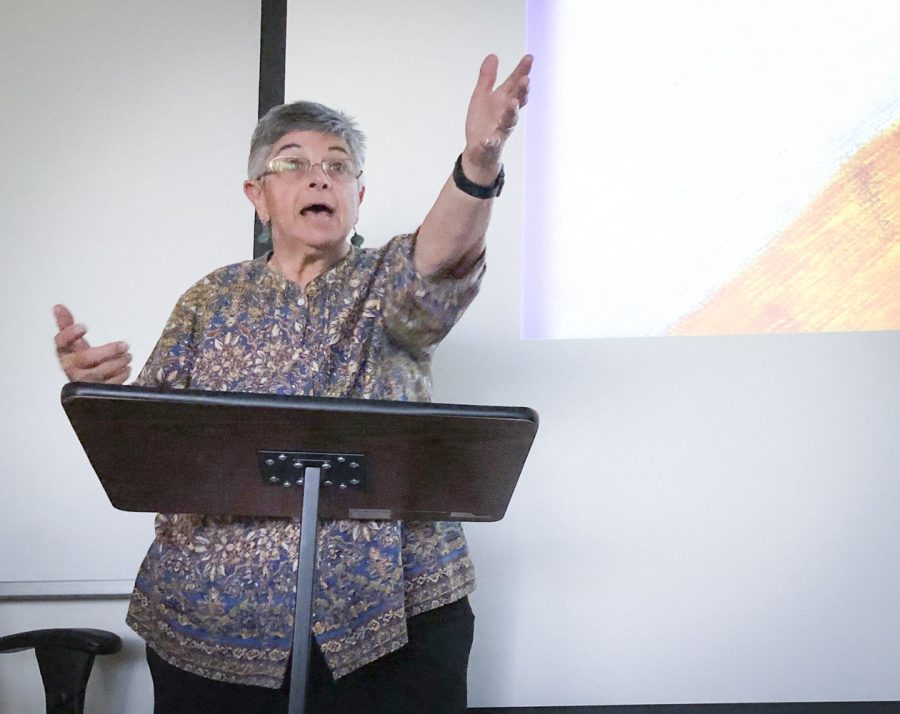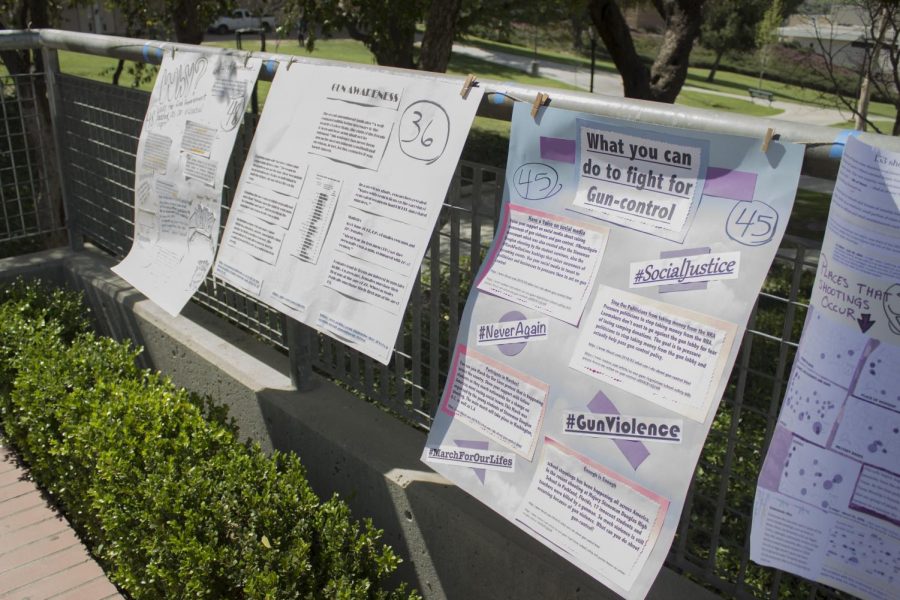For the Friday Nov. 8 College Choir performance, professor Jinyoung Jang made his way quickly towards the edge of the stage to take his place as the director. As soon as he turned to face the audience, he was greeted with a warm round of applause. After the audience fell silent, Jang proudly introduced the choir, and the piano accompanist, Kevin Fukagawa.
A live musical performance provides outstanding quality of sound and a visual experience, as well. The auditorium is designed to support the accurate acoustics of the voices and to deliver the sound effortlessly to the listeners. The piano was poised onstage as if it were the star of the performance. Its shiny black exterior gleamed brilliantly under the hot lights of the stage. Fukagawa settled down into his place at the piano and began to play the first measure of the opening number.
The program began with “Vox Populi.” This piece is in Latin and the literal meaning is, “the voice of the people is the voice of God, man is a friend to man, and where there is unity, there is victory.” The students of the Combined Choirs delivered this piece with 38 grand vocals. The opening chords were dominated by the first sopranos as the lead, and the altos as their supporting vocals. The bass and tenor parts joined in shortly afterward. The chorus sounded magnificent, as they infused a breath of new life into this fantastic piece. Every part flowed together in expert unison. The audience relaxed and let the sounds envelop their senses.
Next, the Men’s choir performed “Betelehemu,” which is a Christian Nigerian carol. Bethlehem is portrayed as a city of wonder. The song was performed with words of praise and worship for Christ. Warner Salisbury was the vocal soloist, with Jasmine Khorsandi, Ciara McGovern, Bethany Spielman, Olivia Barker, and Fukagawa as percussion support. Large decorative bongo drums, and a silver tambourine were tapping at a steady beat. The male choir assembled in a horseshoe formation, as if they were trying to magnify the sound of their voices by using the U-shape. Then, during the middle of the song, the tempo increased and the men started to use claps at different intervals as well as swaying in time to the music. The music created a jovial nature, and the audience was captivated by the performance.
Next, the Concert Choir performed “The Conversion of Saul.” Set in biblical times, it tells the story of a man named Saul who persecuted Christians. The lyric holds an eerie tone, “Why do you persecute me, Saul?” Saul changed his name to Paul, and was chosen by Christ to lead the growth of Christianity. It began with his sudden dramatic transformation to accept Christ as the song indicates a bright light, which blinds him for three days until he was able to begin his journey on the path with Christ. This piece was extremely difficult to sing because of the tempo that starts out at a full gallop. The soloists, as well as the choir, did a wonderful job of staying in control of their vocals. Although the lyrics were fast, the audience was able to follow along by reading the translation in the program booklet.
The Women’s Choir performed “Cripple Creek,” a traditional Appalachian song. This song possessed an old-fashioned flair with all of the charm that the women exuded while dancing in plaid shirts and cowgirl boots. They sang of schoolgirl crushes on blue- eyed boys and Ferris wheels mixed with the promise of summer. They added fire to the fuel with an irrepressible energy level. The women kept this going throughout the entire performance with pure stamina. All of these factors combined both visibly delighted and physically engaged the audience to clap along with the rhythm.
The next song by the Vocal Jazz Ensemble, “Here Comes the Sun,” is a Beatles’ classic, sung entirely in a cappella form by the students. They provided an upbeat rendition of an iconic song, and each held their own part similar to a barbershop quartet. They were under the pressure of being a smaller group, but delivered an excellent performance. The audience reacted with joy when they immediately recognized the piece.
The Vocal Ensemble sang short arrangements, each unique in tempo, harmony, rhythm and tone. “Little Man in a Hurry,” could best be described as imagining a short, stout business man in New York, huffing and puffing as he drags his navy blue briefcase through a swarming crowd of people to make it to work on time. The song was sung in a staccato rhythm, with quick movements between each verse that mimic the people who rush from one place to the next. This amazed the audience, as well as puzzled them to how the choir could hold such a fast paced song.
“Sure on this Shining Night” shifted to the opposite side of the spectrum where tempo is concerned. The yellow lights of the stage dimmed to a soft indigo blue, as an image of a starry night was portrayed as the backdrop. The tone of the room softened slowly as Jang stood to the side to give the students complete control of the stage, and the audience a complete view of the scene that unfolded before them. The vocals of a four- part harmony almost invited the audience to listen more closely.
Nearing the end of the concert, the combined choirs filed back onstage for the closing numbers, “Five Hebrew Love Songs” and “Hope for Resolution.” Violinist Andrea Hammond and soloist Kristen Jones accompanied these selections.
Notable mentions were “Eyze sheleg!'” and “Kala Kalla.”‘ The first song describes the simplistic beauty of winter, while the second song illustrates a gentle bride in a glowing light. Each song was performed with grace and versatility. The audience was notably pleased by the smooth verses and vocals combined.
The last number in the program was titled, “Hope for Resolution,” performed by the Combined Choirs. The song was accompanied by violinist Andrea Hammond and David Maresca on percussion. The music built up slowly to a massive crescendo, until it peaked with a collection of mighty vocals at its forte on the bridge of the song. The choir began to move slightly on the risers and successfully created a sense of liveliness and spirit.
As the last voice of the Choir fell silent, the audience applauded with a thunderous roar. Jang walked humbly onto the stage, and bowed in gratitude to thank the audience for their appreciation of the performance. Although the Fall Concert was performed for only one evening, it will be surely remembered.

Mens Choir sing Scottish folk song “Loch Lomond.”

Combined Choirs perform opening number “Vox Populi,” directed by jang with piano accompanist, Kevin Fukagawa

